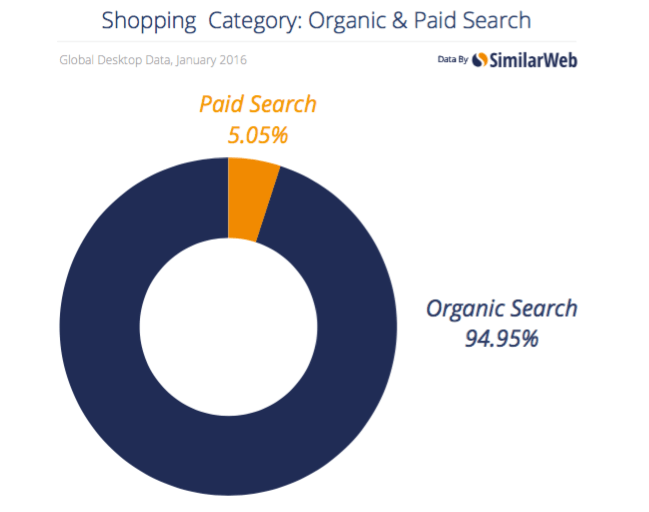What’s the role of content in SEO? Content and SEO are intertwined. Quality content not only improves search engine rankings but also drives organic traffic. Maximizing content in SEO is prioritizing quality while optimizing it for search engines through focused keyword research and alignment with audience needs.
In this article, we’ll explore the crucial role of content in SEO and share practical strategies for small businesses. Continue reading as we cover the indispensable role of content in SEO and unveil strategies that can propel your small business to success.
Note: This article is from a contributor, and the views expressed may not be those of Tech Help Canada.
The Synergy Between Quality Content and SEO
While some perceive SEO and content marketing as distinct entities, they’re closely connected. Here’s how they complement each other:
SEO funnels targeted traffic from search engines, ensuring you attract individuals genuinely interested in your offerings rather than a scattered audience with no real intent. Statistics even indicate that SEO drives 53% more traffic than other channels.
Conversely, content marketing is pivotal in establishing trust, loyalty, and authority. Most consumers meticulously research before committing to a purchase today. High-quality content aids this decision-making process, cementing your brand’s credibility.
Why Content in SEO is Indispensable
- Boosting CTR (Click-Through Rate): Great content naturally attracts user attention, increasing clicks. A higher CTR, in turn, can elevate your site’s standing in search engine rankings.
- Enhancing User Experience: Quality content engagingly serves information. When visitors find value, they’re more likely to stay, revisit, and contribute to positive metrics like extended dwell times and reduced bounce rates.
- Attracting Quality Backlinks: Unique and authoritative content can garner backlinks from esteemed websites. These links tell search engines your content is credible and valuable, influencing higher SERP positions and driving referral traffic.
- Establishing Brand Authority: By consistently sharing top-tier content, you position your brand as an industry thought leader. This not only fosters trust but also showcases your expertise.
- Future-proofing SEO: Search engine algorithms continually evolve. To stay ahead and ensure consistent rankings, it’s crucial that your content is quality and adheres to SEO best practices. This approach safeguards long-term SEO success and resilience against potential algorithm shifts.
Proven Strategies to Create SEO Content
Below are tried-and-true strategies to optimize your content for search engines and drive organic traffic.
Keyword Research is Fundamental
Start by identifying relevant keywords that align with your target audience’s search queries. Tools like SE Rankings or Google Keyword Planner can spotlight long-tail, high-volume keywords suitable for your content.
Before integrating any keyword, discern the search intent behind it. Are users seeking information, product comparisons, or looking to purchase? Once you understand this intent, tailor your content to meet those user expectations.
Prioritize Unique and Insightful Content
Commit to producing content that addresses queries, offers fresh perspectives, and consistently provides value. Ensure that what you present is accurate, current, and thoroughly researched.
Unique content bolsters your brand’s authority and can enhance your website’s rankings. Engaging articles, in-depth blogs, or intriguing videos should encourage users to return to your site. Consistently delivering quality can lead users to explore your website further, boosting interaction with various pages.
On-page Optimization is Crucial
Optimizing on-page elements, such as the title tag, headers (H1, H2, etc.), URL structure, and meta description, is pivotal. Integrating keywords seamlessly ensures that content remains fluid and readable.
Properly optimized on-page elements help search engines better understand and categorize your content, enhancing its chances of achieving a higher position on search results.
Leverage Internal and External Links
Utilize internal links to guide users to relevant sections within your site. This enhances navigation and helps search engines decipher your website’s structure, aiding in the distribution of link equity amongst pages.
For added credibility and depth, supplement your content with external links that point to authoritative and reputable sources, offering readers further valuable insights.
Prioritize User Experience and Readability
Ensure your content is both engaging and easily digestible. Employ headings, subheadings, concise paragraphs, and bullet points to structure your content for easy scanning. Elevate its visual appeal with infographics, videos, and images.
Given the prominence of mobile browsing, ensuring mobile optimization is essential for optimal user experience.
Keep Your Content Updated
Content relevancy is a dynamic aspect of SEO. To safeguard your ranking and maintain audience engagement, routinely revisit and update your content. As industries evolve, refresh your content with the latest insights, data, and statistics to continue attracting organic traffic.
Boost Engagement through Social Sharing
Integrate social sharing buttons to encourage visitors to share your content across social media platforms. Users sharing your content amplifies its reach and visibility, elevating the likelihood of securing backlinks.
For optimum engagement, actively interact with your social media followers, fostering a sense of community. Prompt them to share and engage with your content.
Diversify Your Content Portfolio
Enhance your website by embracing a variety of content formats. Determine which content types have high engagement and conversion to guide your choices. For instance, videos have become crucial in modern SEO content strategies.
To craft content that resonates, tap into the preferences of your target audience. You can adapt and fine-tune your strategy by understanding their preferred content types. Currently, popular content formats include:
- Podcasts
- Blog posts
- Videos
- eBooks
- Infographics
- Interactive elements such as quizzes and polls
Prioritize creating content around trending and pertinent topics to maximize user engagement.
Analyzing Content and Its Influence on SEO
Diving deep into content evaluation allows businesses to assess its various attributes, offering valuable insights for better decision-making. By understanding your website content’s quality, characteristics, and impact, you can ensure it remains engaging and effective for your audience.
Essential SEO Metrics for In-depth Evaluation
Monitor these specific metrics to gauge the effectiveness of your SEO efforts.
- Keyword rankings: Indicates your web page’s position on the SERP (Search Engine Results Page) for keyword targets.
- Organic traffic: The number of visitors to your site through organic search results.
- Session duration: Reflects the average time a visitor spends on your site or a page.
- Bounce rate: This represents the fraction of visitors who exit after viewing only one page.
- Backlinks: Considers the quality and quantity of external domains linking to your content.
- CTR (Click-Through Rate): Showcases how often users click on your website’s link in search results.
Utilizing these metrics and detailed content evaluation provides insights into how effectively your content performs in SERPs. This approach ensures your content remains engaging and aligned with SEO best practices.
Content in SEO: Wrapping Up
SEO and content hold significant sway in determining the success trajectory of small businesses. SEO is the foundational pillar, bolstering user engagement, enhancing search engine visibility, and driving organic traffic. Concurrently, top-notch content amplifies these results by ensuring:
- Increased organic traffic
- Enhanced user engagement
- Improved keyword rankings
- Acquisition of quality backlinks
It’s also essential to note that SEO is ever-evolving, with shifts influenced by changing user behaviors and search engine algorithm updates. For small businesses, staying updated and agile in response to these changes is not just beneficial—it’s crucial. Such adaptability can provide a competitive edge.
Lastly, prioritizing high-quality content is more than a strategic decision for small businesses—it’s an investment in building credibility, trust, and a robust online presence.
This content is from a contributor and may not represent the views of Tech Help Canada.
Want a heads-up once a week whenever a new article drops?







